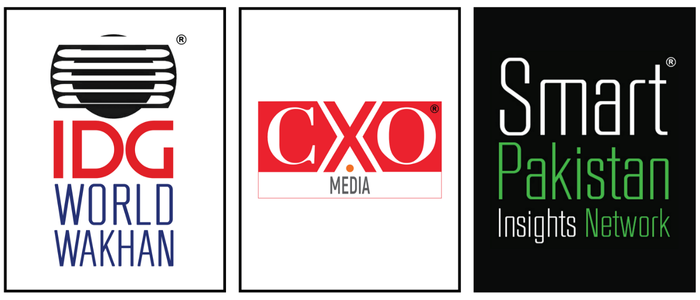In today’s rapidly evolving digital landscape, Security Operations Centers (SOCs) play an indispensable role in safeguarding enterprises against an ever-increasing array of cyber threats. As the complexity and frequency of cyber attacks continue to rise, the strategic importance of SOCs becomes more pronounced, acting as the nerve centers for detecting, analyzing, and responding to potential security threats before they can inflict harm. The SOC Survey 2023 provides critical insights into how enterprises are configuring their SOCs, their readiness to adopt cloud technologies, and their approaches to cybersecurity. This comprehensive survey paints a detailed picture of the current security environment, highlighting how organizations balance the need for robust security measures with the demands of operational efficiency and technological advancements.
As we delve into the key findings of the survey, we uncover significant trends and patterns that are shaping the future of cybersecurity operations across various industries. These insights not only reflect the current state of SOC configurations—whether they are on-premises, cloud-based, or hybrid—but also shed light on the strategic decisions organizations are making in terms of staffing, technology adoption, and response strategies. The readiness of enterprises to adopt cloud technologies is a focal point of the survey, reflecting a critical transition point in SOC management. With a significant portion of enterprises still evaluating the benefits and risks associated with cloud deployments, the survey indicates a cautious but steadily growing acceptance of cloud solutions. This shift is driven by the promise of greater scalability, flexibility, and cost efficiency that cloud technologies offer. By exploring these trends, the article aims to provide stakeholders with actionable insights that can help steer their cybersecurity strategies in an increasingly digitized world. The findings from the SOC Survey 2023 not only highlight the current practices but also forecast the evolving dynamics within the field of cybersecurity, emphasizing the need for continuous adaptation and innovation in SOCs.
Cloud Adoption: Hesitation and Readiness
Cloud adoption represents a crucial frontier in modern network management, offering transformative potential for enterprises looking to innovate and scale. The SOC Survey 2023 underscores this trend, revealing a notable division in network deployment strategies among enterprises. While a significant majority, 64.7%, continue to rely on traditional on-premises infrastructure, there is a clear shift occurring, with 35.3% of enterprises now embracing cloud-based network deployments. This shift signals a growing confidence in cloud technologies, driven by the allure of scalability, flexibility, and the potential for reduced management overhead.
On-premises infrastructure, with its control-centric management, remains preferred by many enterprises due to its perceived security and reliability. Organizations that deal with sensitive data, such as financial institutions and healthcare providers, often opt for on-premises solutions to maintain stringent control over their environments and meet compliance requirements. However, the operational rigidity and higher costs associated with maintaining such infrastructures are compelling businesses to reconsider their long-term network strategies. Conversely, the advantages of cloud computing are becoming more apparent. Cloud services can offer significant cost savings through reduced capital expenditures and the ability to scale resources on demand. Furthermore, cloud providers are continuously enhancing their security measures, which is gradually alleviating some of the traditional concerns associated with cloud computing. Innovations in cloud technology, such as hybrid cloud environments, are also providing businesses with a balanced approach, combining the security of on-premises solutions with the flexibility of cloud services.
Despite these benefits, the survey highlights a considerable degree of hesitation among enterprises when it comes to fully transitioning to cloud or hybrid environments. A substantial 70.6% of respondents remain undecided, reflecting prevalent uncertainties about data security, regulatory compliance, and the complexities of migrating existing systems and data. This indecision is indicative of the challenges that come with such a fundamental shift in IT strategy, where the implications of moving to the cloud extend far beyond technical adjustments, influencing organizational structure, operational procedures, and business continuity planning.
Moreover, only a small fraction of enterprises, about 5.9%, have expressed a definitive intent to adopt a cloud-first approach in the near future. This cautious stance highlights a critical gap between recognizing the potential benefits of cloud technologies and the readiness to implement them. Many organizations are still grappling with how best to leverage cloud solutions without compromising on critical aspects of their operations. As enterprises continue to navigate the complexities of cloud adoption, it becomes essential for decision-makers to closely evaluate the trade-offs involved. Successful cloud transitions require a well-thought-out strategy that considers not only the technological implications but also the cultural and procedural shifts necessary to maximize the benefits of cloud technologies. Engaging with cloud specialists, investing in staff training, and choosing the right cloud provider are pivotal steps in ensuring that cloud strategies are effectively aligned with the broader goals of the organization.
The Current Landscape of Security Operations Centers
The SOC Survey 2023 provides a comprehensive snapshot of the current configurations of Security Operations Centers (SOCs) across various industries, illustrating a predominant inclination towards on-premises setups. With 58.8% of enterprises choosing to maintain their security operations in-house, it is evident that a high degree of control and the ability to tailor security practices to specific organizational needs remain paramount, especially in sectors with strict regulatory compliance requirements such as finance, healthcare, and government.
The preference for on-premises SOCs underscores the critical importance that enterprises place on maintaining direct oversight over their security infrastructures. This setup not only allows organizations to configure their security environments precisely according to their unique requirements but also ensures that sensitive data does not traverse external networks, thereby reducing exposure to external vulnerabilities. Moreover, on-premises environments are often seen as more robust against certain types of cyber threats, such as data breaches or unauthorized access, due to their isolated nature. However, as technology evolves and the benefits of cloud computing become increasingly undeniable, there is a growing shift towards hybrid SOC models. According to the survey, 29.4% of respondents now employ a mix of on-premises and cloud components in their security operations. This hybrid approach is particularly appealing because it combines the best of both worlds—retaining essential control over critical aspects of cybersecurity while leveraging the cloud’s scalability and cost-effectiveness. For example, hybrid SOCs can utilize cloud-based tools for large-scale data analysis and threat intelligence, while keeping sensitive incident response and data storage functions on-premises.
The move towards hybrid models also reflects a broader trend in IT security: the adaptation to a landscape where threats are increasingly sophisticated and data flows are more complex. By integrating cloud solutions, organizations can enhance their capability to monitor and respond to threats in real-time, using advanced cloud-driven analytics and artificial intelligence to detect patterns that may indicate potential security incidents. Despite these advancements, a notable 11.8% of enterprises do not have a dedicated SOC. Instead, these organizations integrate security operations within their Network Operations Centers (NOCs). While this integrated approach can offer efficiency gains by consolidating IT and security functions, it also raises significant concerns. Without a dedicated SOC, organizations might lack the specialized focus required for comprehensive cyber threat analysis and response. This setup could potentially expose them to increased security risks, as NOCs traditionally focus more on network performance and uptime rather than on proactive threat detection and response.
This lack of specialization might leave gaps in an organization’s defense mechanisms, particularly as cyber threats continue to evolve in complexity and subtlety. The survey’s findings highlight a critical need for all enterprises to reassess their security infrastructure setups in light of current cyber threat landscapes. It is imperative for organizations, especially those without dedicated SOCs, to consider enhancing their security capabilities to effectively identify and mitigate threats. This might involve investing in specialized security tools, adopting more advanced threat detection technologies, or even transitioning to a fully dedicated SOC model to better safeguard their digital assets.
Team Composition and Staffing Insights
The SOC Survey 2023 reveals fascinating insights into the composition and staffing of Security Operations Centers (SOCs), shedding light on how enterprises are structuring their teams to effectively manage and mitigate security risks. The data indicates that the size of SOC teams varies widely, suggesting a diverse set of strategies and priorities influencing how organizations structure their cybersecurity defenses.
A majority of organizations, 64.6%, maintain SOC teams with more than six employees, which illustrates a significant commitment to building robust security operations capable of handling a wide array of security challenges. These larger teams are typically found in organizations that face a higher risk of cyber threats due to their size, industry sector, or the sensitivity of the data they handle. The presence of a sizable team allows for specialized roles within the SOC, such as threat hunters, incident responders, compliance auditors, and cybersecurity analysts, which can significantly enhance an organization’s ability to detect and respond to incidents swiftly and effectively. Conversely, smaller teams of 4-6 employees and 2-4 employees are prevalent in 17.6% and 11.8% of enterprises, respectively. These configurations often reflect budgetary constraints or a strategic decision to run a lean operation, possibly in industries with lower risk profiles or in smaller organizations where cybersecurity threats are perceived as less imminent. However, these smaller teams might also indicate a high degree of efficiency and a reliance on advanced automation tools that can augment human capabilities, allowing fewer staff to manage complex security operations effectively.
Additionally, the survey highlights the critical role of full-time commitment in SOC effectiveness, with 82.4% of surveyed enterprises employing full-time staff within their SOCs. This significant figure underscores the importance of continuous monitoring and the proactive management of security incidents, which are best achieved through dedicated personnel. Full-time SOC staff are essential for maintaining an ongoing awareness of the organization’s security posture, conducting regular security assessments, and ensuring that potential threats are identified and addressed without delay. The full-time nature of these roles also facilitates the development of deep expertise and knowledge, which are crucial in a field as dynamic as cybersecurity. These professionals are more likely to stay abreast of the latest threat developments and security technologies, thereby enhancing the overall resilience of the organization. Furthermore, having a dedicated team encourages the building of a cohesive unit that can work effectively under pressure and respond more adeptly to crisis situations, a common scenario in cyber incident management.
Incident Response Efficiency
The efficiency of incident response is a critical benchmark for the effectiveness of Security Operations Centers (SOCs). According to the SOC Survey 2023, 41.2% of organizations have developed the capability to detect or respond to security incidents within 1-4 hours of their occurrence. This response time is indicative of a proactive security posture that enables organizations to manage and mitigate threats before they can escalate into more severe problems. Having such a rapid response capability is crucial in today’s fast-paced digital environment where the cost and scale of a security breach can grow exponentially with time.
On the other hand, an impressive 23.5% of organizations can respond in less than an hour, showcasing the presence of advanced, real-time monitoring systems and well-established response protocols. These organizations are likely leveraging state-of-the-art technology platforms that integrate artificial intelligence and machine learning to continuously monitor and analyze security data streams for potential threats. However, the picture is not uniformly positive. A segment of the surveyed organizations, taking between 4 to 8 hours to respond, points to potential inefficiencies or gaps in current security setups. Additionally, 11.8% of organizations noted that their response time depends on the nature of the incident, which introduces a degree of variability in their security operations. This variability is a critical area for improvement, as it suggests that these organizations may not have a standardized response process, potentially leading to delayed actions during critical incidents.
Such delays can be particularly detrimental in the context of sophisticated cyber-attacks, which can exploit small windows of opportunity to cause significant damage. It highlights the importance of streamlining and automating response mechanisms to ensure quick and consistent actions across all types of security incidents. Improving response times will not only enhance the ability to mitigate threats but also improve the overall resilience of organizations against cyber-attacks.
Embracing Automation in Security Practices
Automation is increasingly becoming a cornerstone of modern SOC operations, as highlighted by the SOC Survey 2023. A majority of organizations are actively integrating automation into their security strategies, which is a significant step towards enhancing operational efficiency and responsiveness. Notably, 64.7% of organizations have automated the process of vulnerability scanning. This automation is crucial as it allows for the continuous identification of security weaknesses before they can be exploited by malicious actors. Additionally, 58.8% of organizations have taken the step to automate the blocking of malicious IP addresses. This practice is instrumental in preventing attackers from gaining access to network resources and sensitive data. By automating this process, organizations can ensure that threats are mitigated swiftly, often without the need for direct human intervention, thereby reducing the window of opportunity for attackers.
Furthermore, monitoring emails for malware is automated by 52.9% of enterprises, reflecting the critical role this technology plays in safeguarding against phishing and other email-based attacks. Email systems are a common entry point for cyber threats, and automating the detection and blocking of malicious emails is essential for preventing the initial breach. This widespread adoption of automation within SOCs underscores a fundamental shift in how security operations are managed. Automation not only enhances the speed and accuracy of response to threats but also significantly reduces the likelihood of human error, which can often be a critical factor in security breaches. Moreover, it allows security teams to focus more on strategic tasks and complex investigations, rather than routine monitoring and response actions.
Integration and Orchestration within IT Functions
The integration of Security Operations Centers (SOCs) within the broader IT operations of an organization is pivotal for achieving holistic security management. The SOC Survey 2023 reveals that a significant majority, 66.7% of organizations, have recognized this importance and established security orchestration practices. These practices are essential for enhancing coordination and streamlining incident response across various IT departments. By fostering a seamless flow of information and coordinated action plans, these organizations are better positioned to manage complex security situations efficiently. However, the survey also brings to light that 33.3% of SOCs still operate as standalone units. This separation can create silos within the organization, hindering effective communication and collaboration. Such divisions can significantly impede the organization’s ability to detect and respond to threats swiftly. In the dynamic realm of cybersecurity, where the speed of response can often determine the impact of a breach, isolated operations may lead to delayed detection and mitigation of threats, thus increasing the risk of substantial damage.
Moreover, the lack of integration can lead to inconsistencies in security policies and practices across different departments. Without a unified approach, individual units may adopt disparate security measures, which can complicate the overall security management and weaken the organization’s defensive posture. The integration of SOCs into broader IT operations not only enhances the effectiveness of security measures but also contributes to a more resilient and adaptive security infrastructure.
Forward-Looking Insights on Cybersecurity Operations
The SOC Survey 2023 paints a detailed picture of the cybersecurity operations landscape, which is characterized by diverse approaches to deploying and managing SOCs. As enterprises continue on their paths of digital transformation, the findings from the survey highlight the critical need for a strategic approach to SOC management that effectively balances control, flexibility, and integration. In navigating this complex landscape, enterprises must look beyond conventional security measures and adopt a forward-thinking stance that embraces technological advancements, such as cloud computing and automation. These technologies offer significant benefits in terms of scalability, efficiency, and the ability to respond to threats in real-time. However, the adoption of such technologies should be accompanied by efforts to foster a culture of continuous improvement and integration within the organization.
Building such a culture involves regular training and education for IT staff on the latest security practices and technologies. It also requires the establishment of clear communication channels and collaborative practices that span the entirety of the organization’s IT landscape. By doing so, enterprises can ensure that their security operations are not only reactive but also proactive in identifying and mitigating potential threats. Furthermore, the integration of SOC functions across all IT facets enables organizations to leverage collective insights and expertise, enhancing the overall security intelligence and readiness. This holistic approach is crucial in today’s fast-evolving threat landscape, where cyber threats are becoming increasingly sophisticated and pervasive. To conclude, for enterprises aiming to safeguard their critical assets and ensure business continuity in the face of cyber threats, a comprehensive and integrated approach to cybersecurity is indispensable. By prioritizing integration and embracing innovation, organizations can enhance their resilience and position themselves to effectively counter the cybersecurity challenges of tomorrow.
References:
- https://watserv.com/blog/the-8-biggest-barriers-to-cloud-adoption/
- https://www.forbes.com/sites/tonybradley/2024/05/08/the-evolving-landscape-of-security-operations-centers/
- https://medium.com/@sneha.cmi01/understanding-integration-orchestration-middleware-202db53b4928#:~:text=Integration%20and%20orchestration%20middleware%20plays,seamless%20data%20and%20process%20integration.
- https://cybermagazine.com/articles/embracing-automation-to-protect-against-threats
- https://www.cybermaxx.com/incident-response-importance/#:~:text=within%20an%20organization%3F-,An%20effective%20incident%20response%20team%20plays%20a%20crucial%20role%20in,the%20risk%20of%20further%20attacks.





